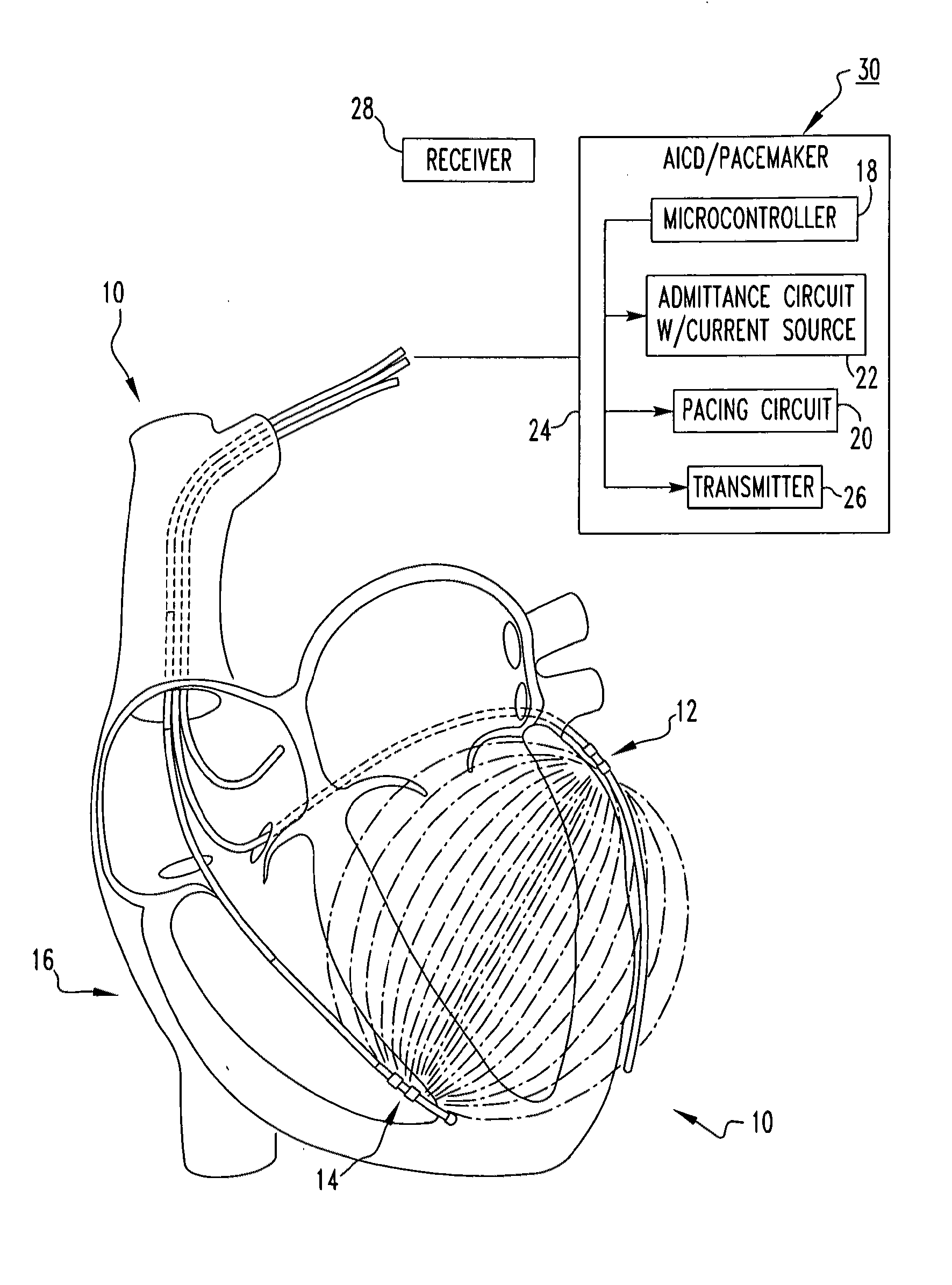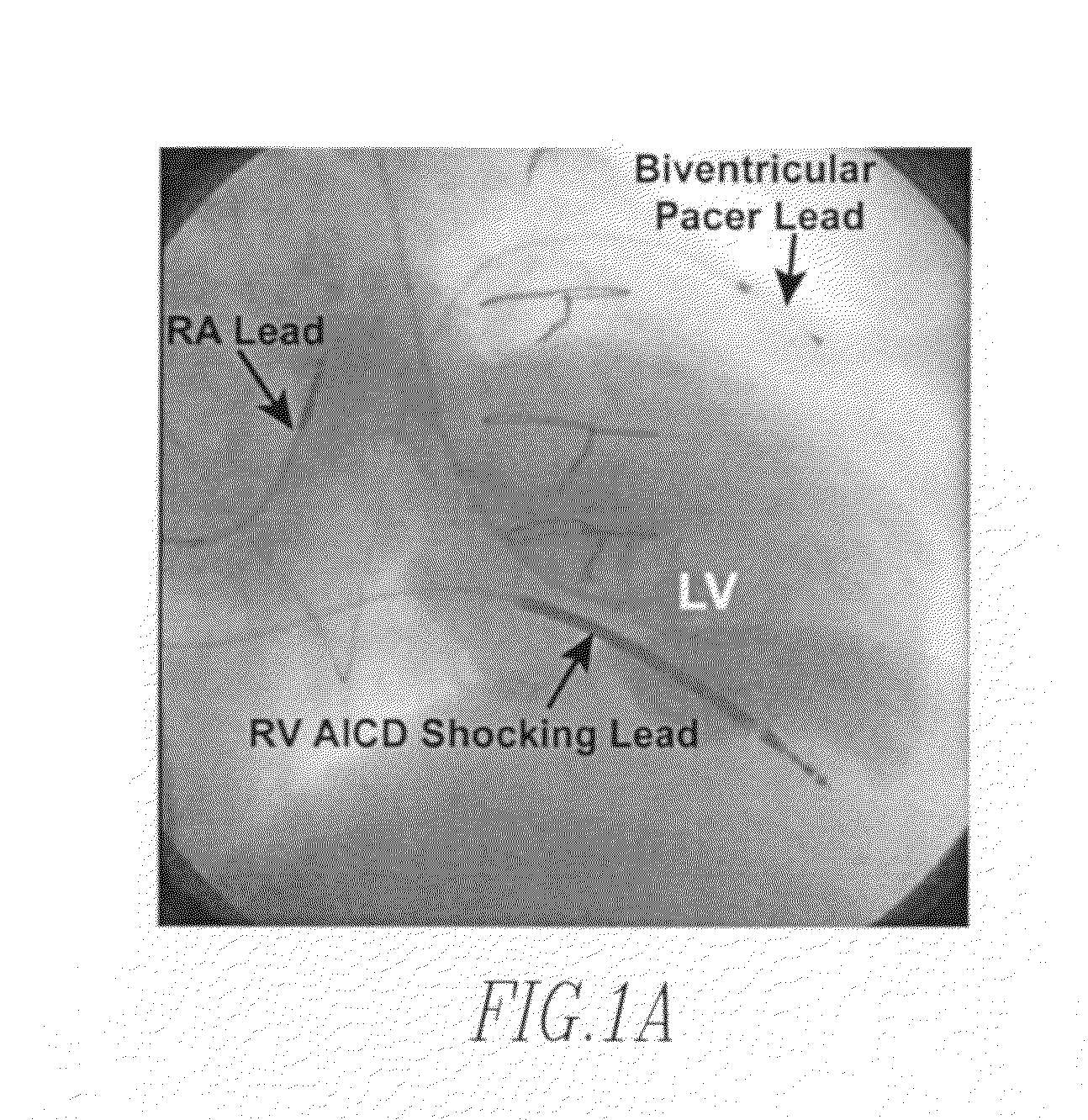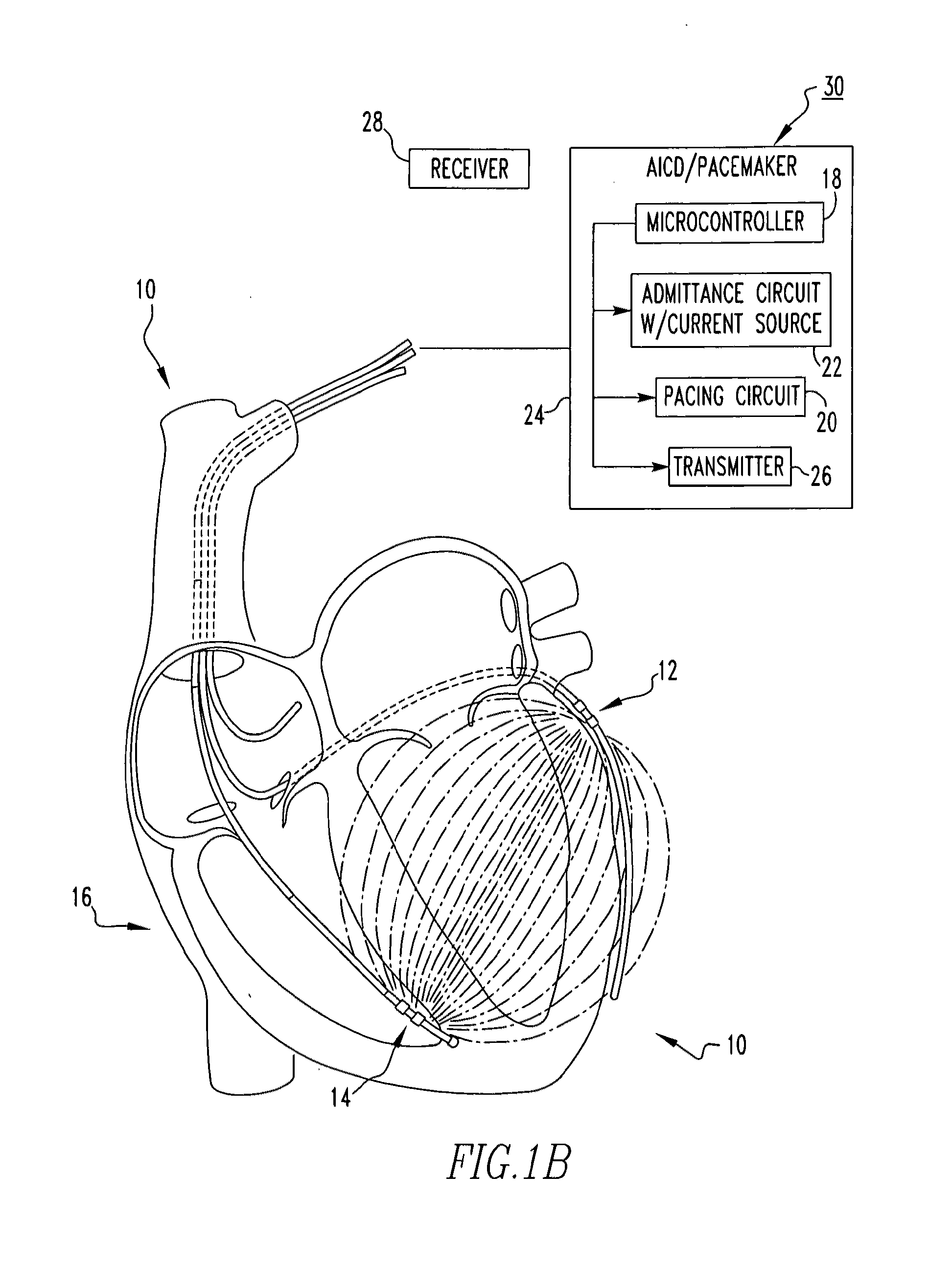Admittance measurement for tuning bi-ventricular pacemakers
a technology of admittance measurement and pacemaker, which is applied in the field of admittance measurement for tuning bi-ventricular pacemakers, can solve the problems of not being able to solve the problem of closed problem, no continuous pacing success measurement method, and still too time-consuming, resource-intensive, labor-intensiv
- Summary
- Abstract
- Description
- Claims
- Application Information
AI Technical Summary
Benefits of technology
Problems solved by technology
Method used
Image
Examples
Embodiment Construction
[0028]Referring now to the drawings wherein like reference numerals refer to similar or identical parts throughout the several views, and more specifically to FIG. 1b thereof, there is shown an apparatus 10 for treating a heart 16 of a patient. The apparatus 10 comprises a first lead 12 and at least a second lead 14 for pacing the heart 16 adapted to be in electrical communication with the heart 16. The apparatus 10 comprises a microcontroller 18 in communication with the first and second leads 12, 14 which triggers the first lead 12 at either different times or the same time from when the microcontroller 18 triggers the second lead 14.
[0029]The apparatus 10 may include a pacing circuit 20 in communication with microcontroller 18 which receives a signal from the microcontroller 18 to activate the pacing circuit 20. The apparatus 10 may include an admittance circuit 22 which measures volume regarding the heart 16 in communication with the microcontroller 18. The microcontroller 18 co...
PUM
 Login to View More
Login to View More Abstract
Description
Claims
Application Information
 Login to View More
Login to View More - R&D
- Intellectual Property
- Life Sciences
- Materials
- Tech Scout
- Unparalleled Data Quality
- Higher Quality Content
- 60% Fewer Hallucinations
Browse by: Latest US Patents, China's latest patents, Technical Efficacy Thesaurus, Application Domain, Technology Topic, Popular Technical Reports.
© 2025 PatSnap. All rights reserved.Legal|Privacy policy|Modern Slavery Act Transparency Statement|Sitemap|About US| Contact US: help@patsnap.com



